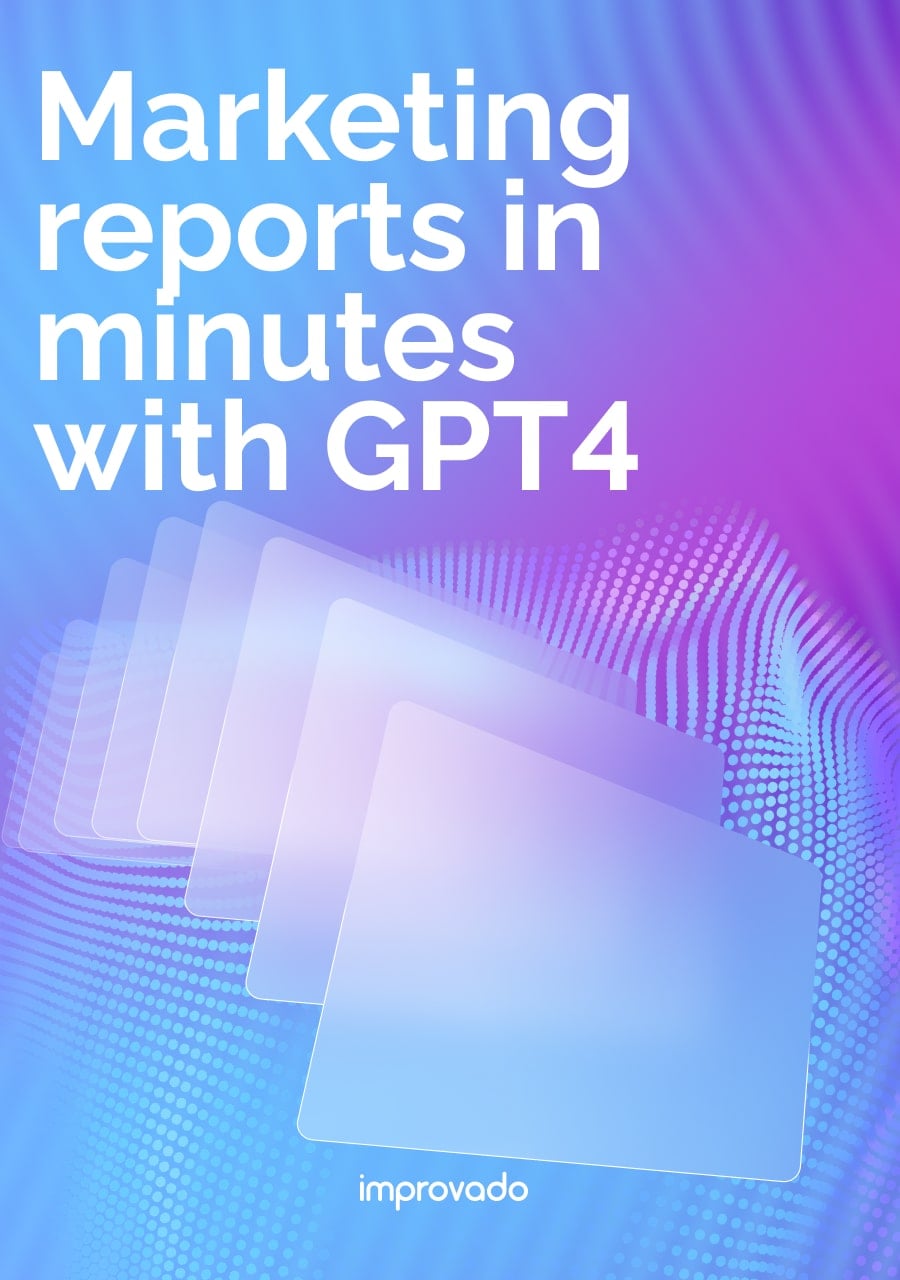With every new cycle, marketing technology advances at a pace that fundamentally reshapes how organizations operate, compete, and communicate with their audiences. What once felt experimental quickly becomes standard practice, and the brands that move early often capture disproportionate advantage.
In this article, we break down the most influential MarTech developments shaping the industry today. You’ll gain a clear view of 10 defining trends, their practical implications, the value they can unlock across your organization, and the strategies you can use to adopt them effectively and stay ahead of the curve.
Key Takeaways
- AI is shifting marketing from manual execution to real-time, predictive, and adaptive systems that adjust content, targeting, and spend automatically.
- MarTech stacks are consolidating around unified data foundations that reduce fragmentation, improve consistency, and simplify vendor management.
- Autonomous AI agents are emerging as the next evolution of marketing automation, handling optimization, reporting, and operational tasks with minimal oversight.
- Organizations investing in clean, unified, continuously updated data see stronger results from every AI initiative.
- Improvado supports these trends by providing the unified data layer and AI-driven analytics capabilities needed for personalization, automation, and real-time decisioning at scale.
What Is Meant by Technology Trends?
Technology trends refer to the directional patterns of innovation, adoption, and evolution in technological capabilities, tools, and methodologies over time.
In the context of marketing technology, these trends represent shifts in how digital platforms, analytics systems, automation tools, and data infrastructure are developed and deployed to solve marketing challenges, improve efficiency, and enhance customer engagement.
MarTech trends specifically encompass innovations across several domains:
- AI and machine learning: Algorithms that automate decision-making, predict customer behavior, and personalize content delivery
- Data infrastructure: Platforms like Customer Data Platforms (CDPs) and data warehouses that unify customer information from disparate sources
- Automation platforms: Tools that streamline repetitive tasks in email marketing, social media posting, and campaign management
- Analytics and measurement: Systems providing real-time insights into campaign performance, attribution, and ROI
- Privacy and compliance: Solutions ensuring data-driven marketing respects consumer privacy rights and regulatory requirements
These trends emerge from the convergence of technological capability (what's newly possible), market demand (what customers and businesses need), and regulatory environment (what compliance frameworks require).
By tracking marketing tech trends, organizations can anticipate which capabilities will deliver competitive advantage and allocate resources accordingly.
The Three Types of Trends in the Market
Market trends, including martech trends, can be categorized into three fundamental types based on their duration, impact scope, and predictability.
1. Short-Term Trends (Tactical Trends)
Short-term trends represent temporary shifts in technology adoption, platform popularity, or tactical approaches lasting typically 6-18 months.
These trends often respond to immediate market conditions, competitive pressures, or sudden capability breakthroughs.
Examples in marketing technology:
- Surge in TikTok advertising investment following platform growth
- Rapid adoption of specific generative AI tools like ChatGPT for content creation
- Quick pivots to privacy-compliant tracking after cookie deprecation announcements
Marketing teams should monitor short-term trends for immediate tactical opportunities but avoid over-investing in infrastructure that may become obsolete quickly.
2. Medium-Term Trends (Strategic Trends)
Medium-term trends represent sustained shifts in marketing approaches, technology architectures, or customer expectations lasting 2-5 years.
These trends typically reflect broader industry evolution and require strategic investment in new capabilities.
Examples in marketing technology:
- Evolution from batch processing to real-time customer data activation
- Movement toward AI-driven automation across campaign workflows
- Adoption of composable martech architectures replacing monolithic platforms
These strategic trends guide multi-year technology investments, organizational structure changes, and skill development priorities for marketing teams.
3. Long-Term Trends (Transformational Trends)
Long-term trends represent fundamental transformations in how marketing functions, how customers behave, or how technology infrastructure operates – typically spanning 5-10+ years.
These trends reshape entire industries and create new paradigms for customer-business relationships.
Examples in marketing technology:
- Transformation from manual campaign management to fully autonomous AI agents
- Movement from platform-owned data to consumer-controlled data sovereignty
- Transition from channel-specific campaigns to unified omnichannel orchestration
Understanding these three trend categories helps marketers balance short-term tactical execution with long-term strategic positioning – ensuring agility in immediate execution while building foundations for future success.
10 Key Marketing Technology Trends for 2026
The martech ecosystem is experiencing unprecedented innovation driven by advances in artificial intelligence, data infrastructure, and privacy-first technologies.
Here are the ten most impactful marketing technology trends reshaping how organizations engage customers and drive growth in 2026.
1. AI-Driven Hyper-Personalization at Scale
AI-driven hyper-personalization represents the most transformative trend in marketing technology, enabling brands to deliver individualized customer experiences across every touchpoint using machine learning algorithms that analyze behavior patterns, preferences, and contextual signals in real-time.
Key capabilities:
- Dynamic content optimization: AI-powered systems automatically adjust messaging, imagery, and offers based on individual user profiles, behavior history, and contextual factors like time of day, device type, and current intent signals
- Predictive product recommendations: Machine learning models analyze purchase history, browsing patterns, and similar customer cohorts to recommend products with highest conversion probability
- Personalized customer journeys: AI agents orchestrate multi-channel experiences adapting in real-time to customer responses, automatically adjusting next-best-action recommendations across email, web, mobile, and advertising channels
- Sentiment-based messaging: Natural language processing analyzes customer communications to detect sentiment, urgency, and intent – triggering personalized responses that match emotional context
Use cases in action:
- E-commerce: Amazon's recommendation engine drives 35% of total revenue through AI-driven product suggestions tailored to individual browsing and purchase history
- B2B marketing: Sales teams receive AI-powered insights on optimal messaging and channel for each prospect based on engagement patterns and firmographic data
- Email marketing: Subject lines, send times, and content blocks automatically optimize for each recipient using predictive analytics that forecast engagement probability
Impact on marketing performance
Organizations adopting generative marketing solutions report producing up to 6x more personalized content variations while cutting production cycles from weeks to days or hours.
This higher level of personalization delivers clear performance gains:
- Email campaigns using generative AI content see 45% higher open rates and 38% higher click-through rates compared to standardized messaging.
- By generating and testing multiple variations simultaneously, teams also identify winning strategies 3.5x faster than with traditional methods.
— Source: The convergence of generative AI and hyper-personalization
Implementation requirements
Achieving hyper-personalization at scale depends on the strength, structure, and reliability of the underlying data foundation. AI can only personalize effectively when it has access to complete, clean, and continuously updated customer signals.
Improvado, an enterprise marketing data platform, provides this foundation by delivering:
- Unified cross-channel ingestion that consolidates behavioral, campaign, CRM, and product usage data into one governed environment.
- Enterprise-grade normalization and schema alignment so AI receives consistent, standardized definitions for audiences, conversions, and attributes across every source.
- Near real-time data availability enabling hyper-personalization engines to respond to new signals like intent spikes, lifecycle changes, engagement shifts the moment they occur.
- Scalable data models and infrastructure capable of supporting thousands of segments, rapid content variation, and continuous experimentation.
- AI-ready data structures that organize metrics and dimensions into business entities optimized for downstream machine learning and personalization logic.
2. Generative AI Transforming Content Creation and Marketing Automation
Generative AI, powered by large language models (LLMs) like GPT-4, Claude, and industry-specific models, is revolutionizing content production, campaign development, and creative workflows across marketing teams.
These systems generate human-quality text, images, video, and code from natural language prompts, dramatically accelerating content creation while reducing costs.
Key applications in marketing:
- Content generation at scale: LLMs produce blog posts, social media captions, ad copy, email marketing sequences, and product descriptions tailored to brand voice, audience segments, and campaign objectives, reducing content production time by 60-80%
- Creative asset production: Image generation models (DALL-E, Midjourney, Stable Diffusion) create custom visuals, ad creatives, and design concepts in minutes rather than days
- Campaign ideation and strategy: Generative AI assists marketers in brainstorming campaign concepts, developing messaging frameworks, and generating use cases for new product launches
- Personalized content variants: Systems automatically generate hundreds of email subject line variations, ad headline alternatives, and landing page copy options optimized for different audience segments
- SEO optimization: AI-powered tools analyze search intent, competitor content, and ranking factors to generate SEO-optimized articles targeting specific keywords and user questions
Impact on marketing performance
- Marketing organizations deploying generative AI report up to 94% savings in production time while also increasing content versions by 300-400%.
- Engagement rates improve by 20-30% or more through AI-driven content personalization and optimization.
Strategic considerations
While generative AI dramatically accelerates content creation, successful implementations require human oversight for brand consistency, factual accuracy verification, and strategic alignment.
Organizations should establish clear governance frameworks defining appropriate use cases, quality standards, and review processes.
3. Unified MarTech Stacks and the Evolution of the MarTech Ecosystem
The martech landscape has evolved from fragmented point solutions to integrated martech stack architectures that unify data, workflows, and analytics across previously siloed tools.
This consolidation addresses the complexity created when average enterprises utilize over 100 marketing tools on a daily basis. This number of platforms creates data inconsistencies, workflow inefficiencies, and measurement challenges.
Another big driver for consolidating and rationalizing martech stack is rising costs. Tool centralization addresses growing concerns about cost, complexity, and underutilized capabilities.
Organizations are favoring platforms that cover multiple functions and offer deeper native feature sets, reducing the need for specialized tools.
The unified martech stack approach:
- Centralized data foundation: Customer Data Platforms (CDPs) or data warehouses serve as the single source of truth for customer information, feeding unified profiles to all downstream martech tools
- Integrated workflow orchestration: Platforms coordinate activities across email marketing, social media management, advertising, and content management systems – ensuring consistent messaging and timing
- Modular structure: There is a strong shift toward composable and modular MarTech architectures, where organizations build custom solutions and integrations tailored to their specific needs instead of relying solely on monolithic platforms. This is once again enabled by AI-assisted development tools.
- API-first architecture: Modern martech platforms expose APIs enabling custom integrations and data flows between systems without manual exports or duplicate data entry
Impact on marketing operations
- Organizations transitioning to unified martech stacks report up to 80% reduction in data integration and reporting time.
- Agencies adopting unified models experience 15x faster client onboarding.
- The unified martech stack approach improves data accuracy enabling better decision-making.
Implementation approach
Successful martech stack unification requires starting with data infrastructure, establishing governance standards for data quality and taxonomy, and mapping customer journey touchpoints to technology requirements.
Organizations that approach unification incrementally – prioritizing foundational data infrastructure before layering on advanced tools – achieve higher reliability, less redundancy, and smoother cross-team adoption.
Improvado provides the backbone for this unified architecture with capabilities purpose-built for connecting and harmonizing the entire MarTech ecosystem:
- End-to-end data consolidation, integrating advertising, web analytics, CRM, revenue, and customer engagement systems into a single controlled environment.
- Cross-platform metric harmonization, aligning formats, naming conventions, and definitions so every tool references the same trusted data.
- Centralized taxonomy and classification management, ensuring consistent audiences, campaign structures, and conversion logic across all platforms.
- System-to-system interoperability, enabling clean, standardized data to flow into cloud warehouses, BI tools, and downstream analytics environments.
- Unified identity and entity resolution, connecting user, account, and campaign data to create a coherent view used across the stack.
- Scalable governance automation, enforcing quality checks, lineage tracking, and access policies across all connected systems.
With Improvado serving as the connective layer, organizations can operate a unified MarTech stack where every tool works from the same structured, governed, and interoperable data foundation.
4. First-Party Data Strategies and Privacy-Centric Marketing
The phasing out of third-party cookies and tightening privacy regulations are accelerating first-party data adoption as the foundation for personalized, compliant marketing that builds stronger customer relationships and loyalty.
The majority of publisher pros (71%) said first-party data played the most significant role in generating positive ad revenue outcomes in 2025. Going into 2026, the importance of first-party data will only increase.
First-party data foundations:
- Direct customer relationships: Brands invest in owned channels (email marketing, mobile apps, loyalty programs, content hubs) that enable direct data collection with explicit user consent
- Value exchange models: Organizations offer tangible benefits (exclusive content, personalized recommendations, loyalty rewards) in exchange for customer data sharing and consent
- Progressive profiling: Systems gradually collect customer information over multiple interactions rather than demanding extensive data upfront – improving completion rates while respecting user privacy
- Zero-party data collection: Customers proactively share preferences, interests, and intentions through preference centers, quizzes, and interactive experiences
Privacy-preserving measurement:
- Server-side tracking: Data collection moves from client-side (browser) to server-side environments, improving accuracy while providing better control over data sharing
- Privacy-safe attribution: Modeling techniques estimate campaign impact without individual-level tracking, using aggregated data and statistical methods
- Clean room technologies: Platforms enable brands and publishers to match customer data and measure campaign effectiveness without sharing raw personally identifiable information
Impact on marketing strategies
- Google reports that leveraging first-party data for marketing can lead to up to 2.9x revenue uplift and 1.5x cost savings through more accurate personalization and targeting.
5. Real-Time Data Activation and Customer Data Platforms
Real-time data activation is the ability to collect, process, and act on customer signals within milliseconds. This represents a critical competitive advantage enabling marketing teams to deliver relevant experiences at the moment of highest intent.
Real-time activation capabilities:
- Behavioral trigger campaigns: Systems detect specific customer actions (cart abandonment, product views, content downloads, pricing page visits) and immediately trigger personalized responses across email marketing, SMS, push notifications, or advertising retargeting
- Dynamic audience segmentation: Customer segments update instantly as behavior changes, ensuring ad targeting, email sends, and content recommendations reflect current state rather than stale batch-processed data
- Cross-channel orchestration: Platforms coordinate messaging across channels in real-time, suppressing redundant messages and ensuring optimal channel selection based on customer preferences and engagement patterns
- Live personalization: Website and app experiences adapt in real-time based on current session behavior, historical patterns, and external context like weather, inventory levels, or promotional events
Impact on marketing performance
- Automated flows have a higher open rate than email campaigns, with top performers reaching 65.74%. This is because of well-timed triggers and list segmentation.
- Marketers reduce wasted ad spend with more precise targeting and budget allocation driven by immediate data feedback.
Implementation approach
Real-time data activation depends on having both continuous data availability and an intelligence layer that can interpret new signals the moment they appear.

The Improvado AI Agent addresses this via a natural-language interface layered on top of your unified marketing dataset:
- Natural-language commands enable marketers to ask questions like “What campaigns trended upward this hour?” or “Which audiences show increased intent today?” and receive answers instantly.
- Real-time signal detection and feedback automatically surfaces anomalies, emerging patterns, and engagement shifts across channels without manual monitoring.
- Actionable recommendations guide next steps, whether it’s reallocating budget, pausing underperforming campaigns, or engaging high-potential audiences, based on the latest data.
- On-demand data exploration gives teams immediate access to charts, tables, and insights, eliminating wait-times for dashboards or SQL queries.
- The agent also supports scheduled queries, allowing recurring analytics checks to be delivered automatically.
6. Voice Search Optimization and Conversational Marketing
Voice search adoption continues accelerating as smart speakers, voice assistants (Alexa, Google Assistant, Siri), and voice-enabled devices proliferate across consumer and business environments. This shift requires fundamental changes in content strategy, SEO approaches, and customer interaction models.
Voice search optimization strategies:
- Conversational keyword targeting: Content optimized for natural language queries rather than truncated search terms, focusing on long-tail question-based phrases matching how people actually speak
- Featured snippet optimization: Structuring content to appear in position-zero featured snippets that voice assistants read as answers to voice queries
- Local search emphasis: Voice searches exhibit 3x higher local intent ("near me" queries), requiring robust local SEO, Google Business Profile optimization, and location-specific content
- Schema markup implementation: Structured data markup helps search engines understand content context, improving likelihood of voice search inclusion
Impact on digital marketing
- 50% of global online searches are conducted via voice assistants, with voice search growing about 9% year-over-year.
- Voice commerce is expected to hit $80 billion by 2026, driven by growing voice-activated shopping and ordering behaviors.
- 76% of voice searches for local businesses result in a same-day visit, highlighting voice’s effectiveness in driving foot traffic and local engagement.
— Source: MarketingLTB
7. Predictive Analytics and Marketing Performance Forecasting
Predictive analytics applies machine learning algorithms to historical data patterns, identifying future outcomes and enabling proactive marketing strategies that anticipate customer needs, market shifts, and campaign performance before they occur.
Key predictive applications:
- Customer lifetime value prediction: Models forecast long-term value of individual customers or segments, informing acquisition spending limits and retention investment priorities
- Churn prediction and prevention: Algorithms identify customers at risk of churning based on engagement patterns, usage decline, and behavioral signals – triggering proactive retention campaigns
- Lead scoring and conversion probability: Predictive analytics calculate likelihood of leads converting based on demographic data, engagement history, and behavioral signals – prioritizing sales follow-up and nurture intensity
- Campaign performance forecasting: Models predict expected ROI, conversion rates, and channel performance before campaign launch – enabling budget optimization and strategic adjustments
- Inventory and demand forecasting: Retailers use predictive analytics to anticipate product demand, optimizing inventory levels and informing promotional timing
Impact on marketing performance
- Predictive bidding improves campaign scale by 33%.
- Predictive analytics increases sales forecast accuracy by 38%.
8. Marketing Automation and Autonomous AI Agents
Marketing automation platforms have evolved from simple workflow tools executing predetermined sequences to sophisticated systems incorporating AI agents that make autonomous decisions, optimize tactics in real-time, and adapt strategies based on performance feedback without human intervention.
Next-generation marketing automation incorporates AI agents – autonomous systems that:
- Self-optimize campaigns: AI agents continuously test creative variants, audience segments, bidding strategies, and channel mixes, automatically implementing winning combinations without manual intervention
- Dynamic content generation: Systems create personalized email content, ad copy, and landing pages tailored to individual recipients using generative AI and customer profile data
- Intelligent budget allocation: AI-powered systems automatically shift spending across campaigns and channels based on real-time performance and predicted outcomes
- Autonomously manage data extraction workflows: Improvado AI agent can generate, schedule, and maintain end-to-end extraction pipelines, configuring source connections, applying filters, validating schemas, and loading data into designated destinations without manual setup or ongoing maintenance.
- Predictive workflow triggers: Rather than waiting for customer actions, systems proactively initiate outreach based on predicted needs or churn risk
Impact on marketing efficiency:
- Organizations deploying autonomous AI agents report dramatic improvements in team productivity, saving up to 30% of time on marketing reporting.
- Adoption of marketing automation platforms resulted in 50% faster daily budget pacing updates, critical for agencies managing large numbers of digital marketing campaigns.
9. Cross-Functional Data Collaboration and Marketing Data Democratization
The traditional model of marketing operating in isolation with proprietary data is giving way to cross-functional collaboration where customer data, insights, and analytics are shared across sales, product, customer success, and finance teams – enabling coordinated strategies and unified customer experiences.
Data democratization initiatives:
- Self-service analytics platforms: Business intelligence tools enable non-technical marketing teams to access data, build reports, and derive insights without dependency on data teams
- Centralized data governance: Organizations establish common data definitions, taxonomies, and quality standards ensuring consistent interpretation across departments
- Shared customer metrics: Revenue teams align around unified definitions of customer lifetime value, acquisition cost, retention rates, and engagement metrics replacing siloed departmental KPIs
- Collaborative insight generation: Marketing shares campaign performance data with product teams to inform roadmap priorities; product shares usage data with marketing to enhance messaging and targeting
Organizational impact:
- Stronger alignment between marketing and sales significantly increases pipeline impact, raising the share of marketing-influenced pipeline by up to 29%. It also drives better conversion performance, contributing to a 65% increase in how effectively target buying groups move into the pipeline.
- When marketing is actively involved, pipeline conversion improves dramatically. Companies see a 65% increase in prospects converting to pipeline compared to cold outreach alone. In practical terms, sales teams convert 65% more qualified opportunities when marketing contributes to the engagement.
— Source: The State of Sales and Marketing Alignment in 2025
10. Social Commerce and Social Media Marketing Integration
Social media platforms have evolved from discovery and awareness channels to complete commerce ecosystems enabling product browsing, purchasing, and customer service entirely within social media apps – creating new opportunities for brands to shorten customer journeys and capture intent at the moment of inspiration.
Social commerce capabilities:
- In-app purchasing: Instagram Shopping, Facebook Shops, TikTok Shopping, and Pinterest Product Pins enable seamless checkout without leaving the platform
- Live shopping events: Live-streamed product demonstrations with real-time purchasing capabilities combine entertainment, education, and commerce
- Influencer-driven commerce: Creator storefronts and affiliate partnerships enable influencers to directly sell products to their audiences with native checkout experiences
- Social proof integration: User-generated content, reviews, and social validation embedded throughout shopping experiences increase conversion rates
Impact on marketing performance:
- Approximately 58% of shoppers in the U.S. reported purchasing a product after seeing it on a social media platform.
- Most consumers (82%) use social media for product discovery and research.
Implementing Marketing Technology Trends: Strategic Roadmap
Successfully adopting new marketing technology requires strategic planning, phased implementation, and organizational change management.
Here's a practical roadmap for marketing teams.
Phase 1: Assess Current MarTech Stack and Capabilities (Months 1-2)
- Technology audit: Document all existing martech tools, data sources, integrations, and workflows identifying redundancies, gaps, and pain points
- Data infrastructure evaluation: Assess customer data quality, accessibility, and unification, determining whether CDP, data warehouse, or data integration platform is needed as foundation
- Capability gap analysis: Compare current capabilities against industry benchmarks and strategic objectives, prioritizing high-impact opportunities
- Skills assessment: Evaluate team competencies in data-driven marketing, analytics, automation, and AI – identifying training needs
Phase 2: Define Data Foundation and Integration Strategy (Months 2-4)
- Select data infrastructure: Choose CDP, data warehouse, or integration platform serving as single source of truth for customer data
- Establish data governance: Define data quality standards, taxonomy, retention policies, and privacy compliance frameworks
- Implement core integrations: Connect priority data sources (CRM, website, email marketing, advertising platforms) to centralized infrastructure
- Build unified customer profiles: Implement identity resolution matching customer records across systems and devices
Phase 3: Deploy High-Impact Capabilities (Months 4-8)
Prioritize implementations delivering immediate value:
- Marketing automation enhancement: Upgrade workflow platforms leveraging unified data for improved segmentation and personalization
- Real-time activation: Implement behavioral trigger campaigns responding to customer actions within minutes
- AI-powered optimization: Deploy predictive analytics for lead scoring, churn prediction, or campaign forecasting
- Analytics consolidation: Build unified reporting dashboards aggregating performance across all channels
Phase 4: Scale AI and Advanced Capabilities (Months 8-12+)
- Generative AI integration: Deploy AI-powered content creation, personalization, and customer interaction tools
- Autonomous optimization: Implement AI agents managing campaign optimization, budget allocation, and tactical execution
- Advanced personalization: Launch AI-driven hyper-personalization across email, web, advertising, and product recommendations
- Continuous optimization: Establish processes for ongoing testing, learning, and capability enhancement
Measuring Marketing Technology ROI and Performance
Justifying martech investments requires demonstrating clear return on investment through both efficiency gains and revenue impact. Key metrics for measuring marketing technology value include:
Efficiency and Productivity Metrics
Marketing Performance Metrics
Conclusion
MarTech in 2026 will be defined by tighter integration, real-time intelligence, and AI systems that can interpret signals and act on them instantly. The landscape is shifting toward unified data environments, automated decisioning, and tools built to reduce manual effort while improving precision and speed.
Improvado supports this evolution by providing the data foundation and AI layer required to operationalize these trends. Its platform centralizes cross-channel data, enforces consistency and governance, and powers an AI Agent capable of generating insights, recommendations, and automated analytical workflows.
If you’re looking to modernize your stack with unified data and an AI layer built for enterprise marketing, book a demo with Improvado.
.png)





.png)
